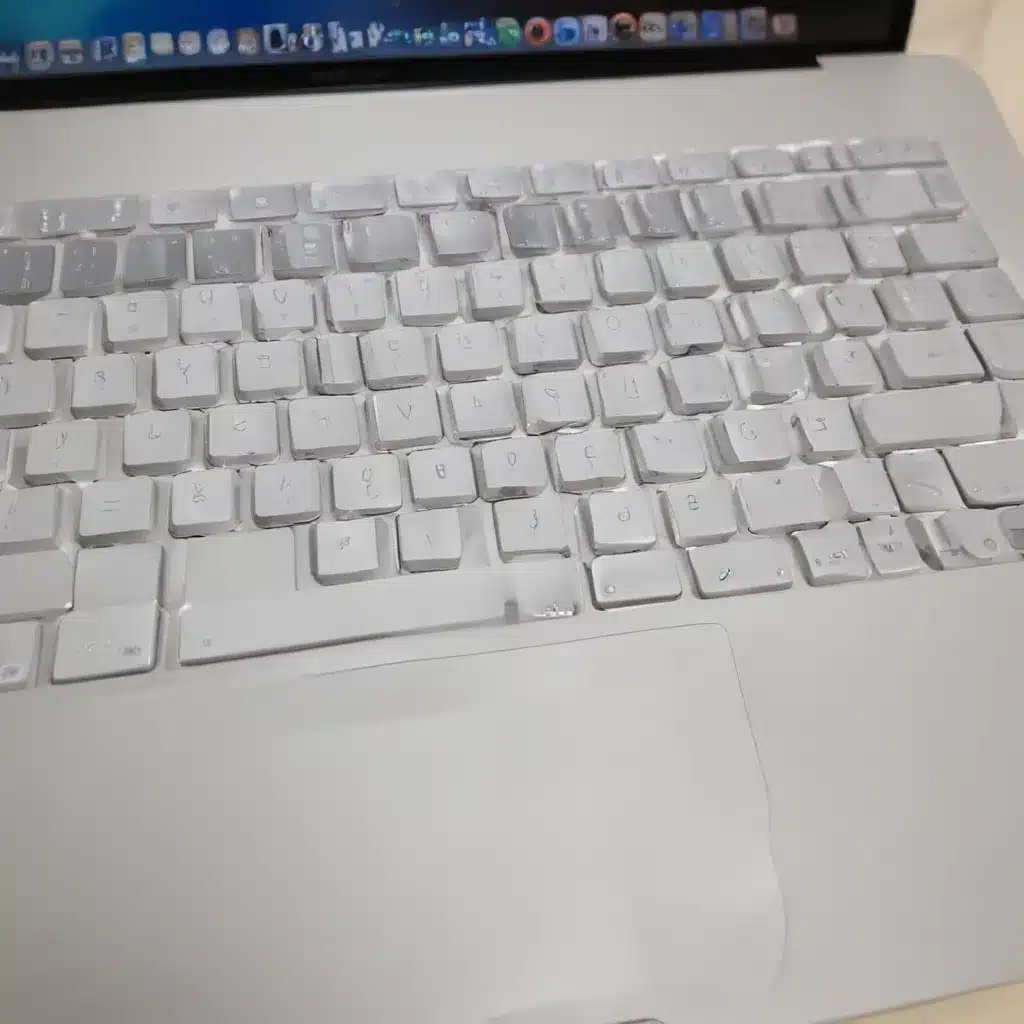The Dreaded Keyboard Dilemma
As a lifelong MacBook enthusiast, I’ve experienced my fair share of technological hiccups. But nothing quite compares to the heart-sinking moment when your trusty MacBook keyboard suddenly decides to go on strike. It’s like waking up to find your car keys have mysteriously vanished – you’re stuck, stranded, and left scratching your head, wondering what on earth went wrong.
Recently, I encountered this very issue with my brand-new M2 MacBook Air. One minute, I was typing away, lost in a flow of productivity, and the next, a handful of keys had simply stopped responding. It was a jarring experience, to say the least. In a panic, I frantically searched the internet for answers, determined to get my keyboard back in working order.
Troubleshooting the Unresponsive Keys
My first instinct was to delve into the diagnostics, just as the user in the Apple discussion thread had done [1]. I carefully checked the “Slow Keys” setting, ensured the correct keyboard input was selected, and verified that my software was up-to-date. But alas, the stubborn keys remained stubbornly unresponsive.
Next, I turned to the wealth of knowledge available on the Apple support website [2]. The guide provided a comprehensive list of troubleshooting steps, from restarting my MacBook to trying an external keyboard. But even with these measures, the issue persisted.
Just when I was about to surrender and book a Genius Bar appointment, I stumbled upon another user’s story on the Apple discussion forum [3]. Their keyboard had stopped working after just five days, and they were in a similar state of panic. Aha, I thought, I’m not alone in this predicament!
Uncovering the Root Cause
As I delved deeper into the forum posts, a pattern began to emerge. It seemed that unresponsive keys on MacBooks were not an uncommon problem, and the causes could range from hardware issues to software glitches.
In the case of my M2 MacBook Air, I suspect that the culprit might be a hardware defect. After all, the keyboard on a brand-new device shouldn’t be failing within a few weeks, right? It’s a frustrating reality that even the latest and greatest technology can sometimes fall victim to manufacturing flaws or quality control issues.
The Road to Resolution
With a clearer understanding of the problem, I set out on a mission to find a solution. I tried every trick in the book, from gently tapping the keys to meticulously cleaning the keyboard (you’d be amazed at the amount of dust that can accumulate in those tiny crevices).
Alas, none of these DIY attempts proved fruitful. It was time to bite the bullet and visit the Genius Bar, as suggested by the original poster in the Apple discussion thread [1].
The technicians at the Apple store were incredibly helpful and patient, thoroughly examining my MacBook and running a series of diagnostics. After a thorough investigation, they determined that the issue was indeed a hardware problem and recommended a repair.
Lessons Learned and Moving Forward
While the keyboard debacle was a frustrating experience, it taught me a valuable lesson about the importance of being proactive and informed when it comes to tech issues. By tapping into the wealth of knowledge available online, I was able to navigate the troubleshooting process with a bit more confidence and direction.
Going forward, I’ll be sure to keep a close eye on my MacBook’s performance, and at the first sign of any keyboard-related hiccups, I’ll be quick to seek professional assistance. After all, a well-functioning keyboard is the backbone of any productive digital workflow, and I can’t afford to let it let me down.
So, if you ever find yourself in a similar predicament, don’t despair. With a bit of perseverance, some online research, and the help of the experts, you too can conquer the dreaded unresponsive keys on your beloved MacBook.
[1] Apple Discussion Thread
[2] Apple Support Guide
[3] Apple Discussion Thread 2













